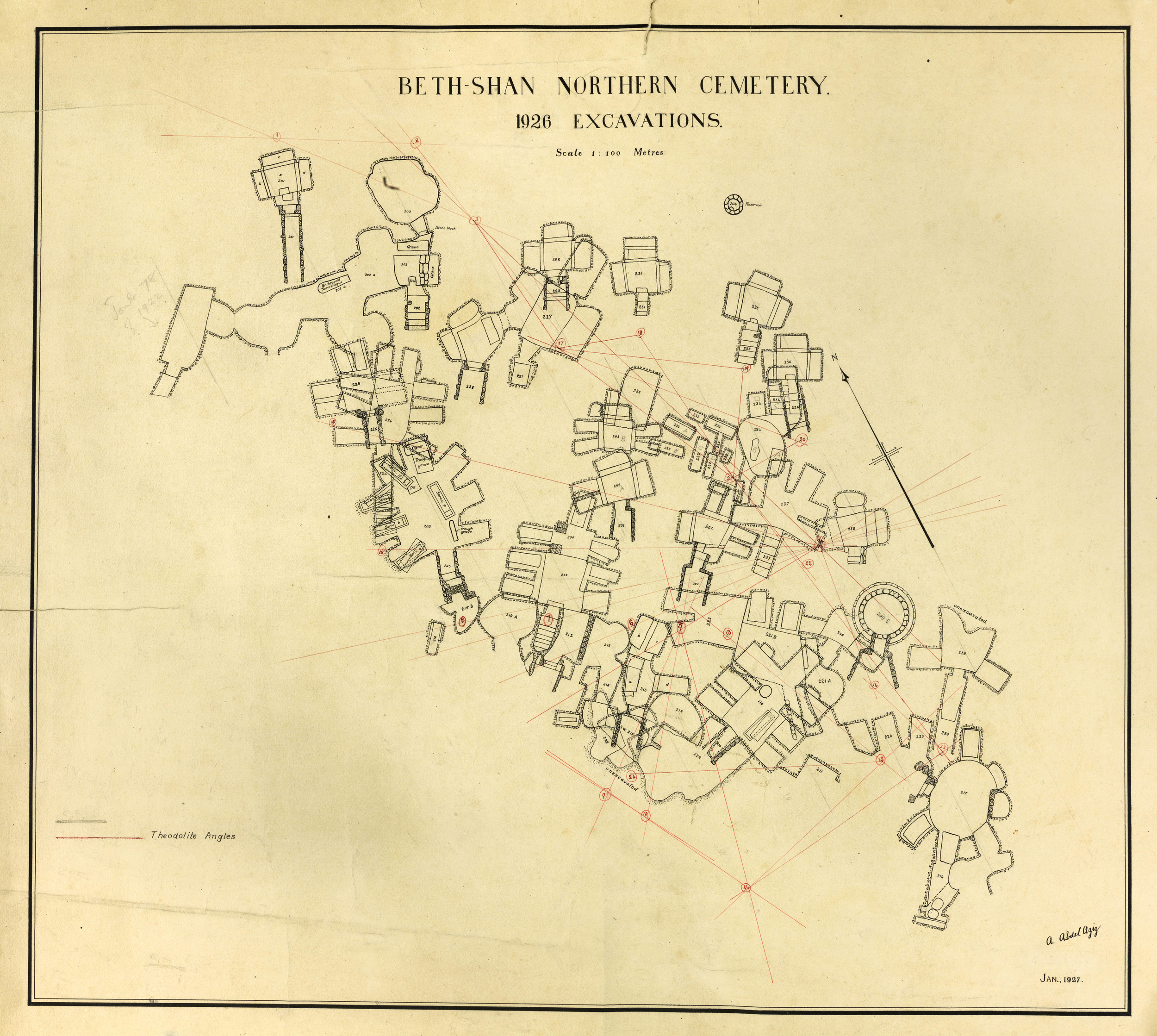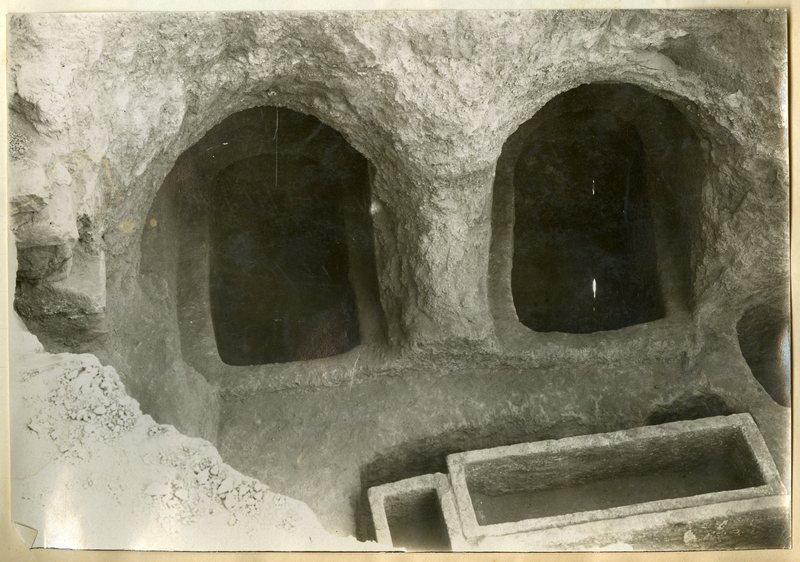The Northern Cemetery
View from the northeast of the Northern Cemetery, dated 6 May 1922.
The Northern Cemetery at Beth Shean affords a wealth of evidence for both burial practices and aspects of daily life among the diverse population of the city in Late Antiquity. The cemetery contains over two hundred tombs, ranging in date over almost three millennia, which have been carved into the greyish-white travertine rock of the slope. The finds from the Late Antique tombs number in the thousands, with the most common being pottery, glass, and jewelry items. Unfortunately, the only comprehensive analysis of the Roman and Byzantine tombs, contained in Gerald M. Fitzgerald's manuscript “Excavations in the Northern Cemetery Area, 1922 – 1931,” has not been published.






Most of the Late Antique tombs fall into two types of layout. The first features a rectangular or circular main chamber out of which loculi, or narrow spaces for burial, radiate perpendicularly. The second type features a rectangular main chamber with arcosolia, or arched recesses, carved into three sides of the tomb. These types of tombs were very common in Late Antique Palestine and were not utilized by any one particular religious group. Individuals were buried in the loculi or arcosolia, although several tombs also contained stone sarcophagi or pit burials dug into the ground of the main chamber. Grave goods, offerings placed with the deceased in their tomb, were common and included jewelry, pottery and glass vessels, lamps, and figurines. Tombs were often used over generations, as is evidenced by the chronological range in coin finds and pottery lamp types found in the tombs.
The archaeological evidence from the Northern Cemetery demonstrates that burial practice in Late Antiquity was far from religiously segregated and standardized. Not only did Christians, Jews, Samaritans, and pagans up through the fourth century CE, share cemeteries and, potentially, burial in the same tombs, but particular burial practices, tomb types, and funerary objects were not necessarily limited to one particular religion. Even when a seemingly blatant religious symbol or grave good is present, such as the Jewish incense shovel from Tomb 239 or the Christian Chi-Rho bottle from Tomb 295, associated burial objects may contradict the religion ascribed. These conclusions support the evidence for the relatively peaceful coexistence of these faiths in Beth Shean, a city that actively preserved aspects of its Hellenistic cultural foundations throughout Late Antiquity.




For further reading:


